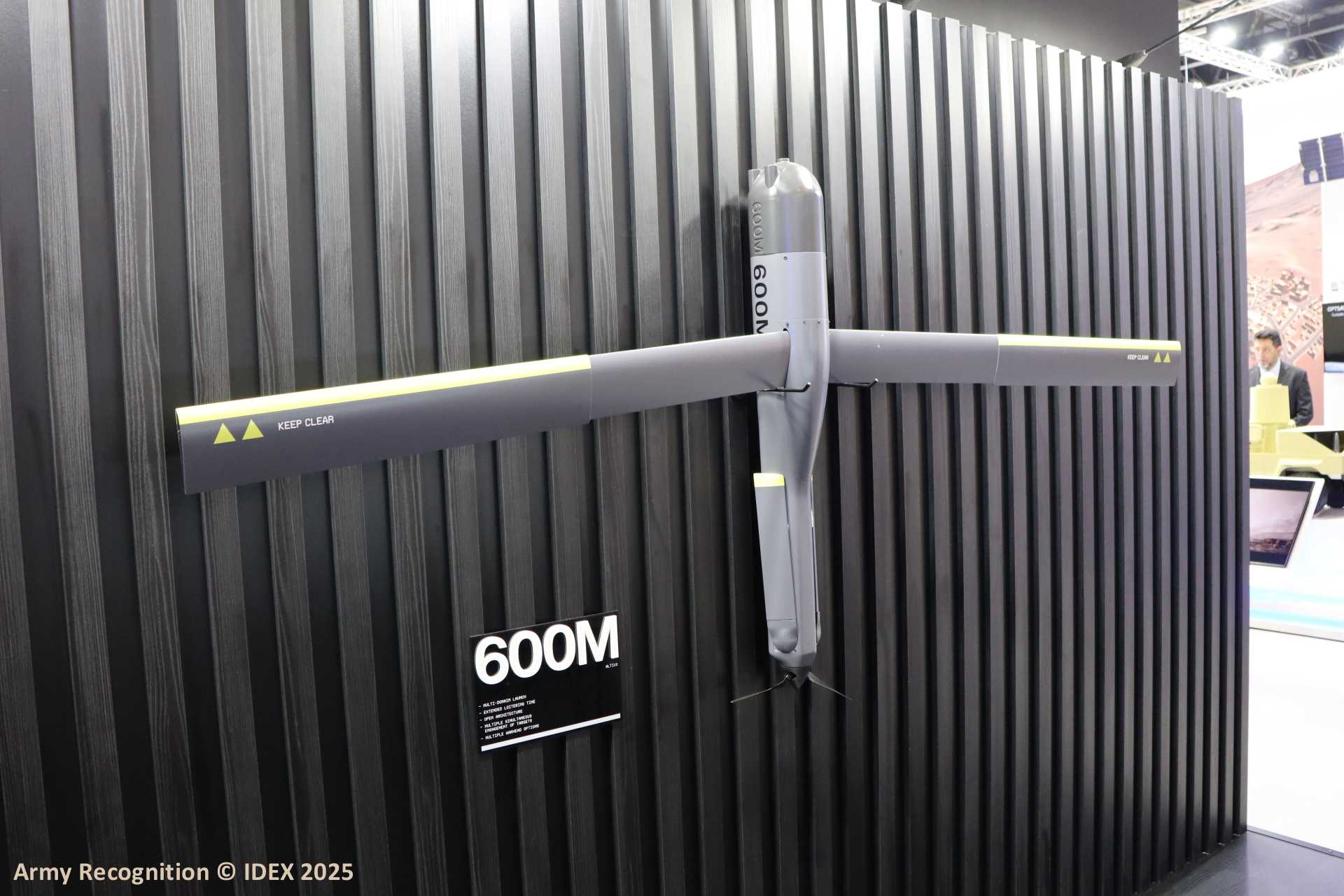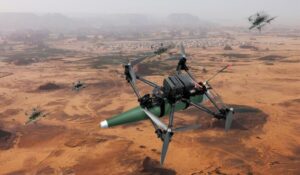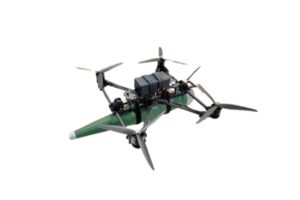台湾将用首批美制Altius 600M无人机打击400公里内目标
快速阅读: 2024年,台湾防务部门接收美国交付的Altius-600M巡飞弹,增强地面打击与防御能力。部长邱国正感谢美台团队快速完成项目,并强调新系统对台湾作战能力的提升作用。
During the meeting, both parties exchanged commemorative items and reviewed the delivery. Minister Chiu thanked both the U.S. team and his own staff for the rapid completion of the project, noting that it had begun in 2024 and resulted in the delivery of operational equipment to the Army within one year. He stated that the new systems provide an immediate combat capability and contribute to strengthening Taiwan’s ground-based strike and defensive capacities. Later in the day, Palmer Luckey delivered a lecture at the Ministry of National Defense auditorium on the topic of Taiwan’s military technology innovation, attended by military personnel and ministry officials.
The Altius-600M is a loitering munition derived from the base Altius-600 UAV platform, originally developed by Area-I and now manufactured by Anduril Industries. It is designed for modularity and multi-mission capability, featuring a 12-kilogram airframe with payload capacity ranging between three and seven pounds. The Altius-600M offers endurance of up to four hours and can reach targets as far as 400 kilometers from its launch point. It can be launched from multiple domains including ground vehicles, helicopters such as the UH-60 Black Hawk, transport aircraft like the C-130, fixed-wing UAVs including the XQ-58A Valkyrie, and naval vessels. Its compatibility with pneumatically integrated launch systems and Common Launch Tubes enables flexibility in deployment. The system can carry ISR payloads, electronic warfare modules, RF decoys, communications relay packages, and kinetic warheads. The Altius-600M variant is designed for one-way missions, functioning as a kamikaze drone. Unlike reusable versions of the base platform, the 600M detonates on target.
The autonomy of the Altius-600M is based on Anduril’s Lattice control system, which allows a single operator to manage multiple drones simultaneously. The drones can communicate, coordinate, and operate collaboratively as part of a networked swarm. In field scenarios, one drone may act as a scout identifying a threat, while another executes the strike. The system can also be programmed to loiter until it detects a designated radar emission or visual target. If a threat is located, the operator receives an alert and can either direct the drone to orbit the area or authorize a strike. According to Palmer Luckey, the platform enables pilots or remote operators to remain several miles away from hostile zones while still directing precision engagement. The Altius series has been tested by the U.S. Army under the Air-Launched Effects (ALE) program, including in scenarios involving collaborative teaming with AH-64 Apache helicopters. In one demonstration, the Army launched 28 Altius-600 drones in four successive waves, with one operator controlling the entire swarm as it conducted target acquisition and simulated strikes.
The Ministry of National Defense stated that the Altius-600M delivery is part of a larger strategy to integrate asymmetric and resilient capabilities into Taiwan’s defense architecture. Minister Chiu emphasized that the Defense Innovation team (DIO) within the ministry is tasked with assessing how emerging technologies like loitering munitions can be applied in combat. He noted that the introduction of the 600M shows an institutional willingness to accelerate the fielding of systems that address Taiwan’s specific operational needs. He also reiterated the importance of integrating these systems into Taiwan’s force development plans and urged personnel to move away from legacy thinking and adopt new operational models built around distributed lethality and autonomous platforms. The Altius-600M systems are expected to enhance Taiwan’s ability to operate in contested environments by extending strike reach and enabling distributed coordination without the continuous presence of manned systems near the front line.
Taiwan’s broader drone acquisition strategy involves both foreign procurement and domestic development. In addition to the Altius-600M, Taiwan has also received 685 Switchblade 300 drones under a $360 million arms package approved by the U.S. government in 2024. These two systems together bring Taiwan’s inventory of attack drones to nearly 1,000 units. They are intended to provide a short-term capability to execute attritable strikes in a high-intensity conflict. According to U.S. defense planners, these drones form part of a broader strategy aimed at creating a drone-based denial layer across the Taiwan Strait. This concept, described by Indo-Pacific Command leaders as a “hellscape,” involves deploying large quantities of unmanned systems to delay and disrupt amphibious or aerial invasions long enough for allied forces to mobilize. These drones are expected to work in conjunction with domestic systems to form a multi-layered kill web that includes kamikaze UAVs, autonomous surface vessels, and electronic warfare nodes. Officials have stressed that failure to procure these drones in sufficient numbers would reduce their deterrent effect and allow a potential adversary to overwhelm Taiwanese defenses quickly.
Taiwan is simultaneously pursuing a major expansion of its domestic UAV manufacturing sector. The Chien Hsiang anti-radiation loitering munition, developed by the National Chung-Shan Institute of Science and Technology (NCSIST), is now in serial production. It features a range of up to 1,000 kilometers and a top speed of 185 kilometers per hour, and is intended to strike radar emitters. Taiwan aims to produce around 48 units annually with a cumulative total approaching 150 by 2025. Additionally, Taiwan has developed FPV kamikaze drones, such as the Overkill, co-developed by Thunder Tiger and NCSIST using Auterion’s AI-powered strike software. Testing concluded in mid-2025, and Thunder Tiger has secured software licenses for up to 25,000 units. Export targets include Southeast Asian markets that seek non-Chinese origin components. However, Taiwan’s industry has only produced 8,000 to 10,000 drones in the 12 months leading to April 2025, well below its national target of 180,000 drones per year by 2028. Challenges include high unit costs, low domestic procurement levels, and limited foreign orders.
In July 2025, Taiwan’s Defense Armaments Bureau issued a tender for 48,750 domestically built drones to be delivered between 2026 and 2027 at a cost of NT$50 billion, equivalent to approximately $1.4 billion. This is over fourteen times the quantity ordered in 2023. The five drone types include vertical takeoff and landing (VTOL) multirotors with payloads above 2.5 kilograms, fixed-wing UAVs with over two hours of endurance, and single-use drones designed for attack missions over land and sea. The goal is to rapidly scale Taiwan’s unmanned fleet for both defensive and offensive operations. However, structural issues persist. Taiwan does not currently produce drone-specific semiconductors and relies heavily on general-purpose chips from foreign suppliers, which are more expensive than Chinese alternatives. The industry is constrained by lack of procurement certainty, and none of its manufacturers are currently listed on the U.S. Department of Defense’s Blue List of approved drone suppliers. Analysts have warned that failure to scale up production and secure export channels will leave Taiwan dependent on external sources during a conflict and unable to achieve drone self-sufficiency.
(以上内容均由Ai生成)








